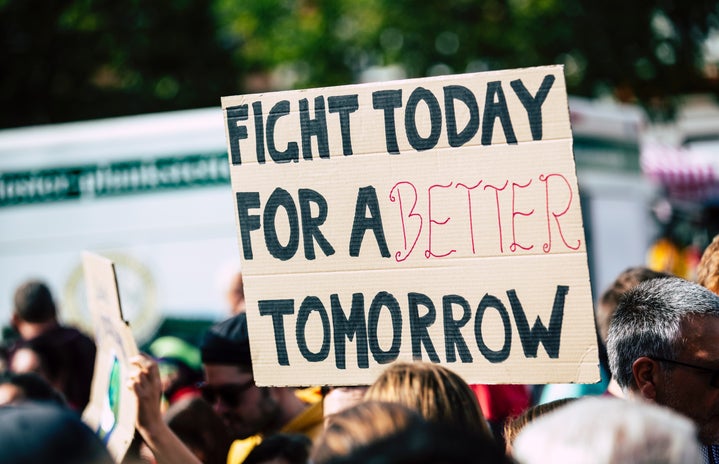As I’m sure many of you have seen on the news, tensions between Russia and Ukraine have evolved into an all-out war. But why is this happening? And what does it mean for both parties and the surrounding European nations?
In late 2021, Russia began sending troops to the Ukrainian border, all while denying any intention to attack. At the time, Vladimir Putin, Russia’s leader, wrote a long article describing Russians and Ukrainians as “one nation”. Putin lamented the collapse of the Soviet Union in 1991, and accused Ukraine of being merely a puppet state of the Western nations. Part of the reason for this accusation (and the ensuing conflict) is Ukraine’s expressed desire to join NATO, which stands for The North Atlantic Treaty Organization; it is a defensive military alliance of thirty Western European nations. Putin fears that, with the help of NATO, Ukraine may try to recapture the annexed region of Crimea, which was seized by Russia in 2014.
In order to understand the current conflict, it is essential to gain an understanding of the events surrounding Crimea. The issue began when the pro-Russian Ukrainian president Viktor Yanokovych was ousted in 2014 after protests surrounding his leadership. Russia retaliated by seizing Crimea and provoking conflict in the eastern regions of Ukraine. This was done by siding with separatist rebels fighting against Ukrainian forces. Since then, the area has been in conflict, with rebels fighting for control of the eastern regions of Luhansk and Donetsk. These regions were the focus of Russian troops leading up to the start of the war this past week. Putin officially recognized the separatist controlled areas of these regions as independent states, contradicting their 2015 peace deal. In addition to this, Putin supports separatist claims to even more Ukrainian territory, causing many to wonder how far Russia will go to redraw European borders.
This brings us to the current conflict and events that happened this past week. On February 24th, Russian troops began advances on Kyiv, the capital of Ukraine. This followed an order from president Putin that contained false claims of genocide and fascism in Ukraine, products of the continuing 2014 conflict. Ukrainian president Volodymr Zelensky was appalled, stating that there are no such phenomena in the nation currently. Regardless, Russian forces started their attack by targeting important landmarks such as military headquarters and airports before calling in tanks and troops from the north, east, and south, as well as Russia’s ally Belarus. Dozens have died already, and Germany has dubbed the conflict “Putin’s war.”
“Putin’s war” is a major turning point in European history as it is the first time a major power has invaded a neighboring country since World War Two. The Ukrainian military is concerned and predicts conflict occurring in dense, urban areas due to the sheer scale of the Russian forces. The military has called on all reservists from 18 to 60 years old to support the Ukrainian resistance effort. Additionally, bordering nations such as Poland and Romania are preparing for an influx of up to five million refugees.
NATO has also assisted in the defense effort, providing field hospitals and weapons to Ukraine. It deployed 5000 troops to the Baltic states and Poland with more possibly arriving in Romania, Bulgaria, Hungary, and Slovakia. NATO is, however, hesitant to send combat troops directly to Ukraine, instead opting for putting warplanes on alert and supporting the nation in the other ways mentioned above. Western nations also intend to help by targeting the Russian economy and financial institutions. For example, the UK and the European Union have both imposed personal sanctions on Putin himself, and the US has begun targeting ten of the biggest financial institutions in Russia, making it difficult for people to perform transactions in dollars or euros. Russia’s national airline has been banned from landing in the UK, and Ukrainian allies have been discouraged from buying Russian oil and gas.
Even with all of these restrictions, Putin maintains his position in terms of NATO and Ukraine’s status with the Western nations. Additionally, he demands that NATO return to its pre-1997 borders and remove all military equipment from member states that joined the organization during and after the year 1997. This is an extreme position to take as NATO affirms that no current member states will be giving up their membership anytime soon. As for Ukraine, NATO is always open to new members, but may take a while to incorporate the nation into their organization.
Things are at an impasse diplomatically as well. Ukraine has called for peaceful negotiations, but Russia says that they can only talk peacefully if Kyiv surrenders and demilitarizes, which will not be happening. This leaves the continuing violence as the only option unless either party can think of another way to resolve tensions. The collective hope is that, one way or another, Ukraine and its allies will find a way to put an end to this war and negotiate peacefully with Russia. Unfortunately, until then, “Putin’s war” rages on.
Source:
Kirby, Paul. “Why is Russia invading Ukraine and what does Putin want?” BBC, 25 February 2022, https://www.bbc.com/news/world-europe-56720589. Accessed 25 February 2022.


